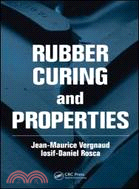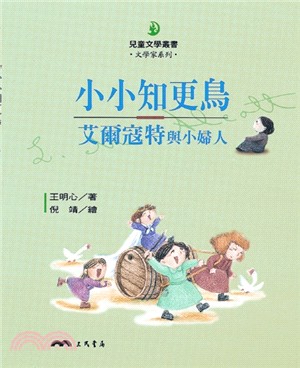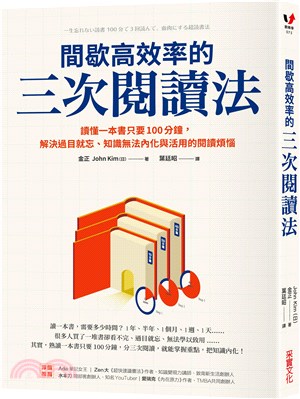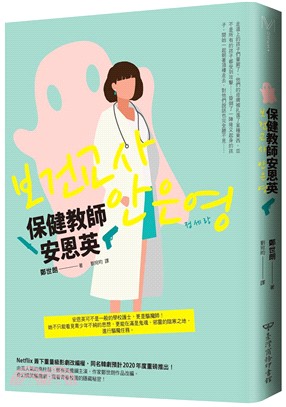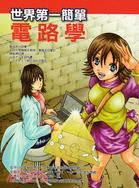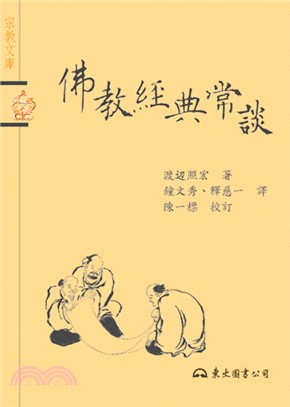Rubber Curing and Properties
- ISBN13:9781420085228
- 出版社:CRC Press UK
- 作者:Jean-Maurice Vergnaud; Iosif-Daniel Rosca
- 裝訂/頁數:精裝/224頁
- 出版日:2008/12/02
商品簡介
目次
Eye View of the Cure Process, First Attempts
1.1
Method Based on the Capacity of Liquid Absorption
1.1.1
Principle of the Method
1.1.2
Experimental
1.1.3
Experimental Results and Discussion
1.1.4
Calculation of the State of
Cure
1.1.5
Temperature Dependence and Reference Temperature
1.1.6
New Model Built by Hands and Horsfall
1.1.7
Verification of the Method on Thick Rubber Samples
1.1.8
Conclusions on This
Method
1.2
Numerical Evaluation of the State of
Cure
1.2.1
Principle of the
Method
1.2.2
Theoretical
1.2.3
Results
1.3
Heat Conduction and Vulcanization in
Molds
1.3.1
Principle of the
Method
1.3.2
Theoretical
1.3.3
Theoretical and Experimental
Results
1.3.4
Remarks on the Calorimetry
Studies
1.4
Evaluation of Temperature and Extent of Cure during the
Process
1.4.1
Scheme of the
Method
1.4.2
Theoretical
1.4.3
Kinetic Study Using Isothermal Calorimetry
1.4.4
Results and
Applications
1.4.5
Conclusions
1.5
Expression of the Cure
Reaction
1.5.1
S-Shaped SOC–Time Curves and Scorch Period at the Beginning
of the Cure
1.5.2
Cure Reaction Defined by a Complex Reaction System
1.6
General
Conclusions
References.
Chapter 2: General
Study on Heat
Transfer
2.1
Various Means of Heat
Transfer
2.1.1
Heat
Conduction
2.1.2
Heat Convection
2.1.3
Heat
Radiation
2.2
Heat Conduction
2.2.1
Principle of Heat
Conduction
2.2.2
Differential Equation of Heat
Conduction
2.2.3
General Solution of Heat Conduction (Separation of Variables)
2.2.4
Initial and Boundary
Conditions
2.2.4.1
Initial Conditions
2.2.4.2
Boundary
Conditions
2.3
Heat
Convection
2.3.1
Forced Heat Convection
2.3.2
Natural (Free) Heat
Convection
2.4
Solutions of the Equations of Heat
Transfer
2.4.1
Sheet Heated on Both Sides with Infinite Heat Transfer at
the
Interface
2.4.2
Heat Transfer through a Rubber Sheet Immersed in
a Large Volume of Fluid
2.5
Thermal Properties of
Rubbers
2.5.1
Specific Heat
2.5.2
Thermal
Conductivity
2.5.3
Thermal
Diffusivity
2.5.4
Surface Heat Transfer
Coefficient
2.5.5
Conclusions on Gum
Rubbers
2.6
Heating or Cooling Stages without Cure Reaction
2.6.1
Cooling Stage of a Perfectly Cured Rubber Sheet in
Motionless
Fluid
2.6.1.1
Case of Motionless Air at Room Temperature in
Laminar Mode
2.6.1.2
Case of Motionless Air at Room Temperature in
Turbulent
Mode
2.6.2
Cooling of Perfectly Cured Rubber in Stirred
Fluid
2.6.2.1
Case of Stirred Air in a Vertical Position
2.6.2.2
Case of Stirred Water in a Vertical Position
2.6.3
Heating Stage of the Cured Rubber in the
Mold
2.7
Conclusions on Heat Transfer Boundary
Conditions
References.
Chapter 3: Kinetics
of the Cure
Reaction
3.1
Calorimetry: Principle, Theory, and
Techniques
3.1.1
Principle of
Calorimetry
3.1.2
Theoretical Considerations in
Calorimetry
3.1.2.1
Case of the Calorimeter with a Cylindrical Sample
3.1.2.2
Case of the Calorimeter with a Horizontal Sensible Detector,
Plane in Shape
3.1.3
Isothermal Calorimetry
Techniques
3.1.3.1
Measure of the Cure Enthalpy under Isothermal Conditions
3.1.3.2
Kinetics of the Overall Cure Reaction
3.1.4
Calorimetry in Scanning
Mode
3.1.4.1
Measure of the Cure Enthalpy in Scanning Mode
3.1.4.2
Kinetics of the Cure Reaction
3.1.5
Conclusions on Calorimetry
Techniques
3.2
Increase in Stiffness during Cure: Isothermal
MDR
3.2.1
Presentation of the Technique
3.2.2
Process of Cure in Isothermal
MDR
3.2.2.1
Experimental
3.2.2.2
Theoretical Treatment
3.2.2.3
Results Obtained by Calorimetry
3.2.2.4
Results Obtained by Using Either MDR or Calorimetry
3.2.3
Conclusions on the Process in Isothermal MDR
3.3
MDR in Scanning Mode with Constant Heating
Rate
3.3.1
Presentation of the
Technique
3.3.2
Theoretical Treatment
3.3.2.1
Assumptions
3.3.2.2
Mathematical Treatment
3.3.3
Results Obtained with MDR in Scanning Mode
3.3.3.1
Material and Apparatus Used for the Study
3.3.3.2
Calculation of the Torque–Temperature Curve
3.3.3.3
Profiles of Temperature and State of Cure in
the Rubber Sample
3.3.3.4
Evaluation of the Kinetic Parameters from the Curves Obtained
in Scanning Mode
3.3.4
Conclusions on the MDR in Scanning
Mode
3.4
Improvements for MDR in Scanning
Mode
3.4.1
MDR Scanned with Change in Heating Rate
3.4.2
MDR with Square-Root Time–Temperature Dependence
3.4.2.1
Theoretical Treatment of the Process
3.4.2.2
Materials and Apparatus
3.4.3
Results Calculated with the MDR Run with This Method
3.5
Conclusions
References.
Chapter 4: Cure
of Rubber in
Mold
4.1
Rubber–Mold
Relation
4.1.1
Process of Heating and
Cure
4.1.1.1
Mathematical Treatment
4.1.1.2
Numerical Treatment of the Problem
4.1.2
Effect of the Position of the Heating
System
4.1.2.1
Mold–Rubber System
4.1.2.2
Results Obtained for the Cure of the Rubber Sheet
4.2
Effect of the Thickness of the Rubber
Sheet
4.3
Effect of the Enthalpy of
Cure
4.4
Effect of the Temperature on the
Cure
4.5
Effect of the Kinetic Parameters of the Cure
4.5.1
Effect of the Order of the Overall
Reaction
4.5.2
Effect of the Activation
Energy
4.6
Effect Postcure of a Rubber
Sheet
4.7
Cure of Rubber–Metal
Sandwiches
4.7.1
Theoretical Study of the Process of Cure
4.7.2
Results
4.8
Simultaneous Cure of Various Kinds of
Rubbers
4.8.1
Theoretical Approach of the
Process
4.8.2
Results for Bilayer Rubber
Compounds
4.9
General Conclusions
References.
Chapter 5: Cure
of Rubber with Injection
Molding
5.1
Principles of the
Technique
5.2
Evaluation of the Operational Conditions in the Injection
System
5.2.1
Theory
5.2.1.1
Heating Stage in the Reservoir before Injection
5.2.1.2
Injection Stage of the Rubber in the Mold
5.2.2
Results for the Heating Stage in the
Reservoir
5.3
Heating Stage and Cure in the
Mold
5.3.1
Theoretical for the Stage of Cure in the
Mold
5.3.2
Results Obtained by
Calculation
5.4
Conclusions on Injection Molding
References.
Chapter 6: Mechanical
Properties of Rubbers
6.1
Mechanical Properties of Unvulcanized
Rubbers
6.1.1
Principle of Viscoelastic Behavior
6.1.2
Measure of Plasticity and Flow Rate with Plastimeters
6.1.2.1
Compression Plastimeters: Plate Test and Disc Test
6.1.2.2
Rotation Plastimeters: Mooney Viscometer
6.1.2.3
Extrusion Plastimeters and Die Swell
6.1.2.4
Miscellaneous Processibility Tests
6.1.2.5
Correlation between Plastimeters
6.1.3
Scorch Time Measure
6.2
Mechanical Properties of Vulcanized
Rubbers
6.2.1
Tests Run under Static
Conditions
6.2.1.1
Hardness of
Rubber
6.2.1.2
Tensile
Stress/Strain
6.2.1.3
Compression Stress/Strain
6.2.1.4
Shear
Stress/Strain
6.2.1.5
Tear
Tests
6.2.2
Dynamic Stress and Strain Properties
6.2.2.1
Dynamic Compression Property of Vulcanized Rubber
6.3
Conclusions on the Mechanical Properties of
Rubbers
6.3.1
Conclusions Concerned with Unvulcanized Rubber
6.3.2
Conclusions Concerned with Vulcanized Rubber
References.
Chapter 7: Resistance
of Rubber to
Liquids
7.1
Effect of Liquids on Rubber and Its
Measures
7.1.1
Measurement of the Swelling
7.1.2
Standard
Tests
7.2
Liquid Transport by
Diffusion
7.2.1
Principle of
Diffusion
7.2.2
Differential Equations of
Diffusion
7.2.2.1
Case of a One-Dimensional Diffusion through a
Thin
Sheet
7.2.2.2
Radial Diffusion through the Plane Section of a Cylinder
or a Sphere
7.2.3
Initial and Boundary
Conditions
7.2.4
General Solution of the Equations of Diffusion in Sheets
7.2.5
Solution of Diffusion in Sheets with Infinite Coefficient of
Convection
7.2.6
Case of Rubber Sheets in Contact with a Liquid
7.2.7
Determination of the Parameters of Diffusion
7.2.8
Equation of Radial Diffusion with Change in Dimension of
the
Sphere
7.2.9
General Equation of One-Dimension Diffusion
7.3
Diffusion of the Curing Agent during the
Cure
7.4
Examples of Diffusion of Liquids in
Rubbers
7.4.1
Diffusion of Liquids through a Sheet with Change in Dimensions
7.4.1.1
Experimental Procedures
7.4.1.2
Results and Conclusions
7.4.2
Diffusion of Liquids in EPDM Sheets with Different Percentages
of
Peroxide
7.4.2.1
Experimental
7.4.2.2
Results on Kinetics of Absorption and Discussion
7.4.2.3
Anisotropic Swelling of EPDM Rubber Discs
7.5
Drying of Rubbers Containing a
Liquid
7.5.1
Operational Conditions
7.5.2
Experimental Results and
Discussion
7.6
Permeability of Rubbers to Vapors and
Gases
7.6.1
Principle of the
Transfers
7.6.2
Theoreticals of the
Process
7.6.3
Measurements of the Permeability of Gases
7.6.3.1
Constant Volume Method
7.6.3.2
Constant Pressure Method
7.6.3.3
Carrier Gas Method
7.6.4
Measurements of the Permeability of Vapors
7.7
Conclusions on Rubber Resistance to
Liquids
References.
Chapter 8: Methods
of Recycling Waste Tire
Rubber
8.1
General Consideration
8.2
Scrap Tire Disposal in Previous Studies before
1974
8.2.1
Problems Set Down by Scrap Tire Disposal in 1974
8.2.2
Physical
Applications
8.2.3
Fuel Value and
Incineration
8.2.4
Chemical Applications
8.2.4.1
Reclaiming
8.2.4.2
Pyrolysis
8.2.4.3
Carbon Black Manufacture
8.2.4.4
Biodegradation
8.3
Reclaiming Processes in Progress
8.3.1
Artificial Reefs and Highway
Abutments
8.3.2
Asphalt Component and Road
Base
8.3.3
Cure of Scrap Rubber Powder with Addition of New Rubber
8.3.4
Cure of Scrap Rubber Powder without Addition of New Rubber
8.3.4.1
Vibration Isolation Rubber Sheets
8.3.4.2
Rubber Sheets Absorbing Impact Noises in Houses
8.3.5
Concrete
Component
8.3.6
Pyrolysis of Scrap
Rubber
8.3.7
Distribution of Scrap Rubber into
Polymers
8.4
Tentative Conclusions on Tire Rubber
Recycling
References.
Chapter 9: Rubber:
Cure and
Properties
9.1
Conclusions
9.1.1
Evaluation of the State of Cure and Kinetics of Cure
Appendix
Suggested Reading
Index
主題書展
更多主題書展
更多書展本週66折
您曾經瀏覽過的商品
購物須知
外文書商品之書封,為出版社提供之樣本。實際出貨商品,以出版社所提供之現有版本為主。部份書籍,因出版社供應狀況特殊,匯率將依實際狀況做調整。
無庫存之商品,在您完成訂單程序之後,將以空運的方式為你下單調貨。為了縮短等待的時間,建議您將外文書與其他商品分開下單,以獲得最快的取貨速度,平均調貨時間為1~2個月。
為了保護您的權益,「三民網路書店」提供會員七日商品鑑賞期(收到商品為起始日)。
若要辦理退貨,請在商品鑑賞期內寄回,且商品必須是全新狀態與完整包裝(商品、附件、發票、隨貨贈品等)否則恕不接受退貨。




